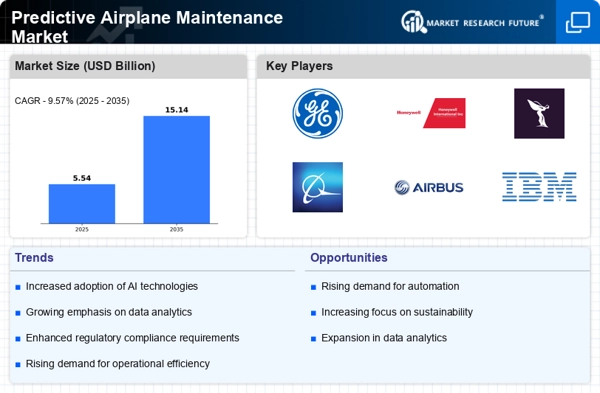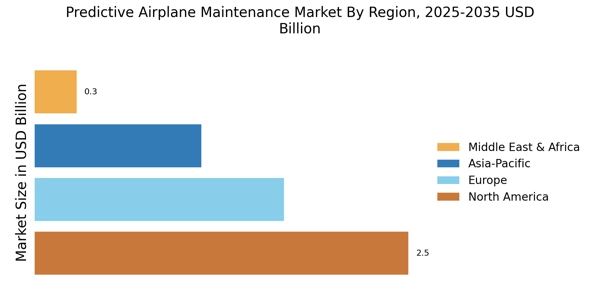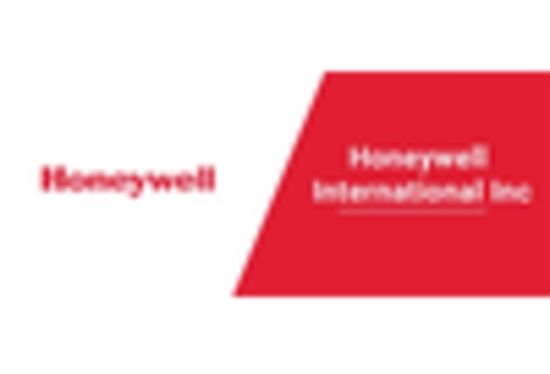Rising Maintenance Costs
The escalating costs associated with aircraft maintenance are a significant driver for the Predictive Airplane Maintenance Market. Airlines are increasingly seeking ways to manage and reduce these costs, which can account for a substantial portion of operational expenses. Predictive maintenance offers a solution by minimizing unplanned maintenance and optimizing scheduled maintenance activities. By leveraging data analytics, airlines can identify potential issues early, thus avoiding costly repairs and downtime. As maintenance costs continue to rise, the adoption of predictive maintenance solutions is likely to accelerate, reinforcing the growth of the Predictive Airplane Maintenance Market.
Advancements in Sensor Technologies
The evolution of sensor technologies plays a crucial role in the Predictive Airplane Maintenance Market. Modern aircraft are equipped with an array of sensors that monitor various systems in real-time. These sensors generate data that can be analyzed to predict maintenance needs accurately. The proliferation of Internet of Things (IoT) devices in aviation enhances data collection and analysis capabilities, leading to more effective predictive maintenance strategies. As sensor technology continues to advance, the accuracy and reliability of predictive maintenance solutions are expected to improve, further stimulating growth in the Predictive Airplane Maintenance Market.
Integration of Artificial Intelligence
The integration of artificial intelligence (AI) technologies into the Predictive Airplane Maintenance Market is transforming maintenance practices. AI algorithms analyze vast amounts of data from aircraft sensors, enabling predictive analytics that can forecast potential failures before they occur. This proactive approach not only enhances safety but also reduces maintenance costs significantly. According to recent estimates, the adoption of AI in maintenance could lead to a reduction in unscheduled maintenance events by up to 30%. As airlines and maintenance organizations increasingly recognize the value of AI, investment in these technologies is expected to rise, further driving the growth of the Predictive Airplane Maintenance Market.
Increased Focus on Safety and Compliance
Safety remains a paramount concern in the aviation industry, driving the need for advanced maintenance solutions. The Predictive Airplane Maintenance Market is experiencing growth due to heightened regulatory scrutiny and the need for compliance with safety standards. Predictive maintenance helps airlines adhere to regulations by ensuring that aircraft are maintained in optimal condition, thus reducing the risk of accidents. As regulatory bodies continue to emphasize safety, airlines are likely to invest more in predictive maintenance technologies. This trend is expected to contribute to a robust growth trajectory for the Predictive Airplane Maintenance Market.
Growing Demand for Operational Efficiency
The demand for operational efficiency within the aviation sector is a key driver of the Predictive Airplane Maintenance Market. Airlines are under constant pressure to minimize downtime and optimize fleet performance. Predictive maintenance strategies allow operators to schedule maintenance activities based on actual aircraft conditions rather than fixed intervals, leading to more efficient use of resources. Reports indicate that airlines implementing predictive maintenance can achieve up to a 20% increase in aircraft availability. This focus on efficiency not only enhances profitability but also improves customer satisfaction, thereby propelling the growth of the Predictive Airplane Maintenance Market.


















Leave a Comment